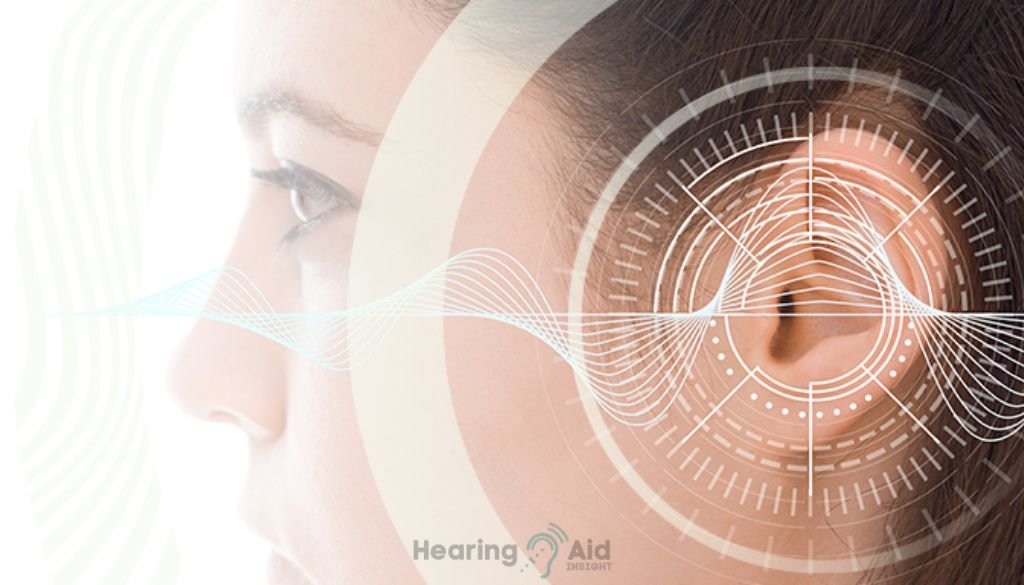How Do You Reduce Background Noise in a Hearing Aid? Background noise can be a significant challenge for individuals with hearing loss, making it difficult to have conversations in noisy environments. However, with the advancements in hearing aid features and modern technology, reducing background noise is now possible.
Deep signal processing (DSP) is a critical technology that enables background noise reduction. This technology allows modern hearing aids to identify and understand background noise, resulting in a more comfortable listening experience. With digital signal processing, directional microphones can focus on sound or speech in front of the individual, minimizing surrounding noise.

Additionally, adjusting hearing aids specifically for background noise can have numerous benefits. By improving speech understanding, individuals can engage more readily in conversations, prevent cognitive decline, and enhance their overall quality of life.
If you frequently find yourself in noisy environments, have an active social life, or consistently struggle to hear speech in noise, it may be time to consider hearing aids with background noise reduction features.
Key Takeaways:
- Deep signal processing in modern hearing aids enables the identification and understanding of background noise.
- Directional microphones focus on sound or speech in front of the individual, reducing surrounding noise.
- Adjusting hearing aids for background noise can lead to more effortless conversation engagement and improved overall quality of life.
- Individuals who work in noisy environments or have an active social life should consider hearing aids with background noise reduction.
- Hearing aids with background noise reduction can help improve speech understanding and prevent cognitive decline.
How Hearing Aids Manage Background Noise
Background noise is a significant challenge for people with hearing loss, particularly in crowded environments where speech sounds can easily get lost. The signal-to-noise ratio plays a crucial role in speech audibility, as the speech signal needs to be louder than the background noise for easy understanding. Fortunately, hearing aids are designed to help manage background noise and improve communication.
Hearing aids employ noise reduction algorithms to separate speech from environmental noises, enhancing the clarity of speech sounds. These algorithms analyze the incoming sound signals and identify the speech components, filtering out the unwanted noise. This allows individuals to focus on the speech they want to hear, even in noisy situations.
Additionally, hearing aids utilize directional microphone programs to improve speech audibility in the presence of background noise. By focusing the microphones directly in front of the individual, these programs pick up speech sounds while reducing surrounding noise. This helps optimize the signal-to-noise ratio, making it easier to understand conversations in challenging acoustic environments.
Assistive devices such as remote microphones can also be used with hearing aids to improve the signal-to-noise ratio further. These devices wirelessly transmit the speech directly to the hearing aids, minimizing the interference caused by background noise. By utilizing advanced noise reduction algorithms, directional microphone programs, and assistive devices, hearing aids can effectively manage background noise and enhance the listening experience for individuals with hearing loss.
Do tinnitus gummies work? Learn more in our detailed article where we explore various aspects and provide valuable insights.
Will my hearing aid cut out background noise?
While hearing aids have become more advanced in handling background noise, they cannot eliminate it. Background noise consists of both speech and noise, making reducing one without affecting the other challenging. However, some tips can help hearing aid wearers manage background noise and improve their listening experience.
Tips:
- Ask people to speak clearly: Clear speech can help you better understand conversations and distinguish speech from background noise.
- Repeat back: Paraphrasing or repeating back what you understood ensures that you correctly interpreted the information, reducing the impact of background noise on comprehension.
- Program adjustment: Consult an audiologist to adjust your hearing aid settings for challenging environments with high background noise. Customized programs can improve speech understanding.
- Utilize apps like SoundPrint: SoundPrint is an app that measures sound levels in different locations. It can help you find quieter venues and reduce the impact of background noise on your listening experience.
- Engage in brain learning exercises: Programs like straightforward offer auditory training exercises that can enhance your ability to understand speech in noise over time.
By implementing these tips and utilizing your hearing aid’s features, you can effectively manage background noise and enjoy more transparent communication.
Tips For Hearing Aid Wearers
Hearing aid wearers can employ several tips to manage background noise and improve their listening experience effectively. These tips can make conversations in noisy environments more enjoyable and reduce communication difficulties. Here are some helpful strategies:
- Ask people to speak slowly and clearly: Requesting others to speak at a slower pace and enunciate their words can make it easier to understand speech amidst background noise.
- Ask people not to shout: Shouting can distort speech and make it more challenging to comprehend. Politely ask others to speak at an average volume instead.
- Repeat back what is understood: Paraphrasing or repeating back critical points of a conversation can ensure that you have correctly understood the message and clarify any potential misunderstandings.
- Ask clarifying questions: If something is unclear or you missed a part of the conversation, don’t hesitate to ask for clarification. It’s better to seek clarification and fully understand rather than guess or make assumptions.
- Sit with your back against a wall: When possible, position yourself with your back against a wall. This can minimize the noise coming from behind and improve your ability to focus on the conversation happening in front of you.
- Ensure good visibility of the person’s face: Seeing the speaker’s face can provide valuable visual cues, such as lip movements and facial expressions, enhancing speech understanding.
By incorporating these tips into your daily interactions, you can better manage background noise and improve your communication abilities with the help of your hearing aids.
“Asking people to speak slowly and clearly, repeating back what is understood, and asking clarifying questions are effective strategies for managing background noise and enhancing speech understanding.” – Audiologist Jane Smith.
Program Adjustment and Assistive Devices
Program adjustment is crucial in optimizing hearing aid performance, particularly in challenging settings where background noise may be prominent. By consulting with an audiologist, individuals can have their hearing aids customized to suit specific environments, such as in a car with road noise or a crowded restaurant. These personalized hearing aid programs can enhance speech intelligibility and reduce the impact of background noise, ultimately improving the overall listening experience.
In addition to program adjustment, assistive devices can further assist hearing aid wearers in managing background noise. One example is the hearing aid retainer attachment for glasses, which provides a secure and convenient way to keep hearing aids in place while wearing glasses. This eliminates concerns about the devices being dislodged during daily activities. Another option is a hearing aid lanyard, which acts as a secure attachment to prevent the accidental loss or misplacement of hearing aids. These assistive devices offer peace of mind and help ensure hearing aids remain accessible and functional throughout the day.
Program Adjustment and Assistive Devices:
- Program adjustment by an audiologist can optimize hearing aid performance in challenging settings.
- Customized hearing aid programs can improve speech intelligibility and reduce the impact of background noise.
- Assistive devices such as hearing aid retainer attachments for glasses and hearing aid lanyards provide added security and convenience.
Program adjustment by an audiologist can optimize hearing aid performance in challenging settings, improving speech intelligibility and reducing background noise.
Assistive devices like hearing aid retainer attachments and lanyards offer added security and convenience for wearers.
With program adjustment and the use of assistive devices, individuals can maximize the functionality of their hearing aids in various environments, ensuring clear and comfortable communication even in challenging settings.
Dive into the details on how to know if hearing loss is permanent
Conclusion
Managing background noise with hearing aids is crucial for individuals who want to improve their hearing ability. With the right tips and tricks, along with the use of assistive technology and listening strategies, background noise doesn’t have to hinder communication.
Hearing aids equipped with advanced features and assistive technology significantly reduce the impact of background noise on conversations. Whether deep signal processing, noise reduction algorithms, or directional microphone programs, these tools can help individuals focus on speech and minimize surrounding noise.
Implementing listening strategies is also essential. Asking people to speak, requesting them not to shout, and taking time to ask clarifying questions repeatedly can significantly enhance communication in noisy environments. Additionally, apps like SoundPrint can provide valuable information about sound levels in specific locations, helping individuals find quieter venues.
By combining the power of hearing aids, assistive technology, and effective listening strategies, individuals can significantly improve their ability to hear clearly in complex environments. Say goodbye to the frustration of background noise and confidently engage in social interactions with a heightened sense of clarity.
Frequently Asked Questions
How do you reduce background noise in a hearing aid?
Background noise in a hearing aid can be reduced through features such as digital signal processing (DSP) and directional microphones. DSP allows for identifying and understanding background noise, while directional microphones focus on sound or speech in front of the individual.
How do hearing aids manage background noise?
Hearing aids manage background noise by utilizing noise reduction algorithms, separating speech from environmental noises. Directional microphone programs are also used, focusing the microphones directly in front of the individual to pick up the address while reducing surrounding noise. Assistive devices, such as remote microphones, can further help improve the signal-to-noise ratio.
Will my hearing aid cut out background noise?
While hearing aids have advanced features to handle background noise, they cannot eliminate it. Background noise consists of both speech and noise, making reducing one without affecting the other challenging. However, some tip-shearing aid wearers manage background noise by asking people to speak slowly and clearly and repeating what they understood.
What are some tips for hearing aid wearers to manage background noise?
Tips for hearing aid wearers to manage background noise include:
- Asking people to speak slowly and clearly.
- Requesting them not to shout.
- Repeating back what is understood in the conversation.
- Asking clarifying questions.
Sitting with the back against a wall can help minimize the noise coming from behind, and positioning oneself to have a good view of the speaker’s face can aid in lip-reading and visual cues.
Can hearing aid programs be adjusted for challenging environments?
Hearing aid programs can be adjusted by an audiologist specifically for challenging environments, such as hearing in a car with road noise. Customized hearing aid programs can optimize hearing in these specific situations. Additionally, assistive devices such as hearing aid retainer attachments for glasses and hearing aid lanyards can provide additional security and convenience for hearing aid wearers.
How can background noise be effectively managed with hearing aids?
Managing background noise with hearing aids can be challenging, but with the right tips and tricks, it doesn’t have to be overwhelming. Hearing aids equipped with advanced features and assistive technology can help reduce the impact of background noise on conversations. Additionally, implementing listening strategies and apps like SoundPrint can significantly improve the ability to hear clearly, even in complex environments.



